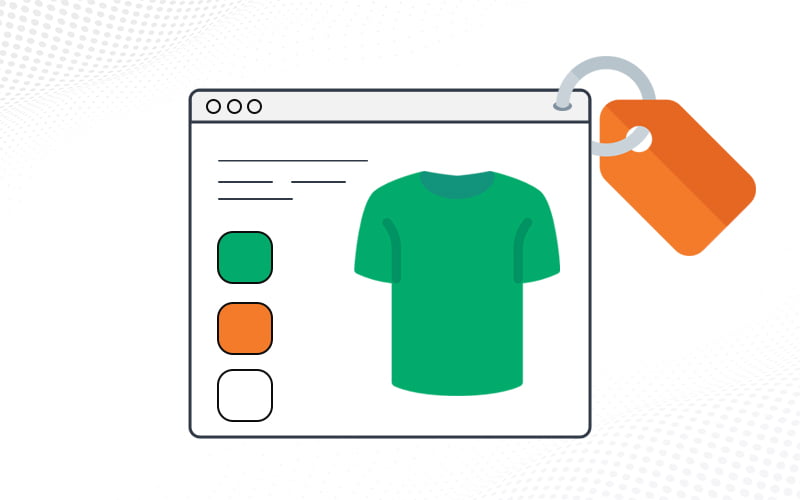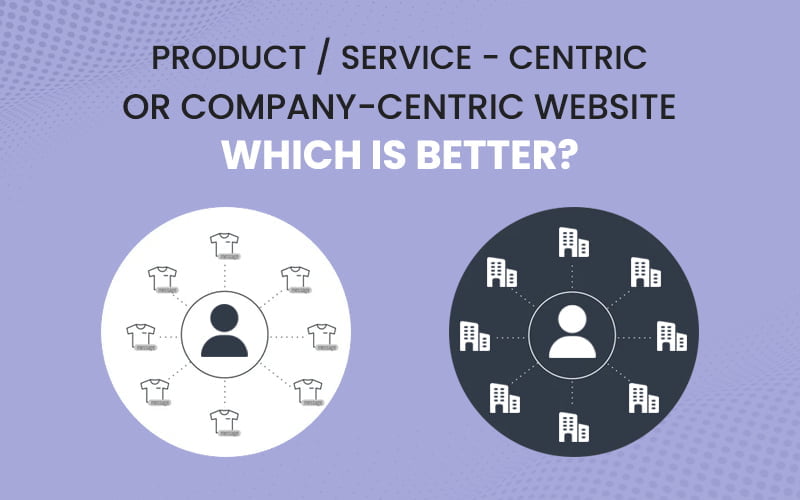Each strategy has advantages and disadvantages, and the optimal choice ultimately relies on the particular business and its objectives.
Product or service-centric websites concentrate on the products or services offered by a company. Websites that are company-centric, on the other hand, emphasize the business and company values. Which one will suit your business requirements?
People typically use Google to search for goods and services. Your website must be relevant to the user’s search in order to keep them from bouncing back in seconds. Websites focused on products and services are preferred above those that are company-centric. As it is more likely to fulfill the user’s needs and complete its search journey on search engines.
Imagine someone looking for a website design company and conducting a Google search to find the company that best meets their needs. He ends up on a website that discusses website development packages and all of the services they offer in the first instance. The likelihood that the user will convert and give them business is high.

In the second scenario, if the user stumbles on a website that does not talk about the services but rather brags about the company, the user is unlikely to spend much time on the website as the purpose for the search is not being fulfilled and he is being served with company values, policies or how it was established. The engagement level will be lower, which will lead to a lower enquire rate.
MNCs are more likely to benefit from company-focused websites. A company-centric website emphasizes the firm rather than how its services can meet the demands of users. Since the firm itself is what they prioritize, rather than the services and products. This strategy is likely to be appropriate for large businesses and MNCs.
After selecting the right approach you are required to work on the website and ensure that your website gets the attention it deserves, try to follow these rules and develop a website that suits your business needs.

1. Recognize your audience.
It may seem obvious, but so many businesses begin writing—or typing—before considering their intended audience. Before creating material, consider the following: Who is my main target market? What about a supplementary audience that can sway and educate my main audience?
2. Adhere to the “inverted pyramid” principle
Web users have limited attention spans, so they’ll decide quickly if your site contains the information they need. Create your material in a pyramid or cone shape that is upside down. The page’s headings feature the most significant messages. Drill down gradually to the more detailed supporting information after that.
3. Use active voice
Put an emphasis on the topic of the sentence and use active verbs rather than passive ones. For instance, write “Place an order of products on our website” rather than “Products can be ordered on our website.”
4. Demonstrate rather than tell
Don’t confine your prose to broad generalizations and abstract ideas. Readers are more likely to comprehend and grasp your messages when you use specific, practical examples and statistics. Using examples and stats can immediately grab the attention of your visitor and keep them engaged
5. Use several media
According to research, the majority of the human brain is visual, and humans digest visual data much more quickly than text. Additionally, an easy-to-read chart or graph can clarify a complex subject better than texts alone. Using compelling images, graphs and videos can help you grab the attention of the visitor.
It is clear that a product or service-centric website is the better choice for businesses. Such websites are more focused on providing information and converting visitors into customers, which leads to better ROI. If you are looking to get website design services, get in touch with Digital Hive today.
